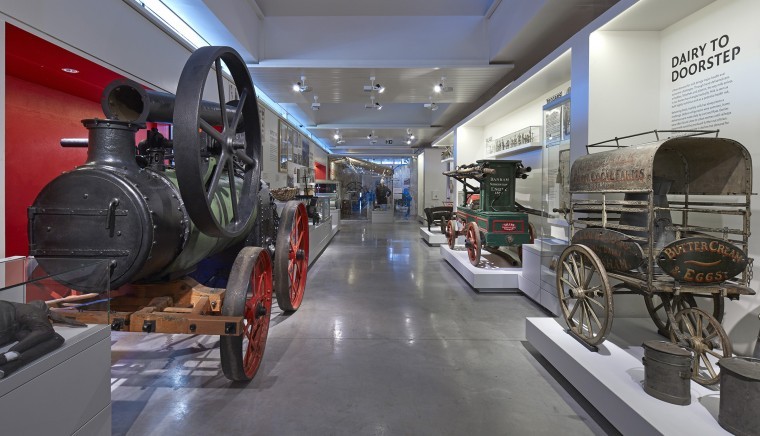MERL was established in Reading in 1951 to capture and record the rapidly changing countryside following world war two. In 2005, it moved to its current premises in St Andrew’s Hall, a building designed by Sir Alfred Waterhouse in 1880 for local businessman Alfred Palmer of the Huntley & Palmer biscuit company.
Following extensive refurbishment the museum – billed as the country’s first and most extensive museum dedicated to agriculture and rural life – reopens with 341 square metres of additional space including a gallery, social learning space developed in partnership with students from the University of Reading; an open access collections area; an enlarged education studio, shop and reception area; and new features in the garden including a shepherd’s hut and community growing spaces. The new spaces were designed by award winning practice Pringle Richards Sharratt Architects with Studio GuM.
MERL has also radically transformed its public displays, with nine new galleries curated around the concept of “our country lives.” The new galleries each explore a theme including “making rural England,” “a year on the farm,” “forces for change” and “wagon walk” and “digging deeper.” Interactive, immersive displays explore questions of identity, environment, technology, culture and health, and aim to challenge perceptions about rural England by revealing the historical and contemporary relevance of country life.
“Our country lives” weaves stories, memories, archive film and photographs from rural lives through new displays which explain how agricultural tools and machinery, wagons, ploughs and traditional crafts such as woodturning, hurdle making and thatching, baskets, strawcraft and leatherwork formed the fabric of rural life. Visitors will be asked to contribute ideas on what should be collected today, inspired by agricultural events attended by MERL in the 1950s.
MERL is also relaunching with a new brand identity designed by Thomas Manss & Company who are also working in partnership with GuM Studio on the new graphics for the museum. MERL is funded by HLF, the Department for Culture, Media and Sport Wolfson museums and galleries improvement fund, The Wellcome Trust, The Headley Trust and The Earley Charity.
Pictured: One of the museum’s installations photographed by Edward Sumner




